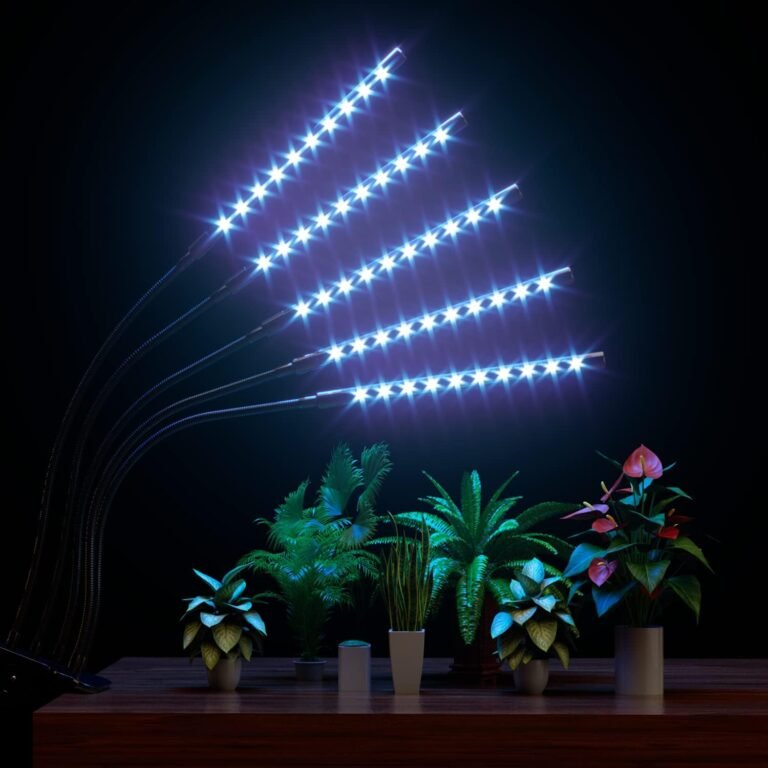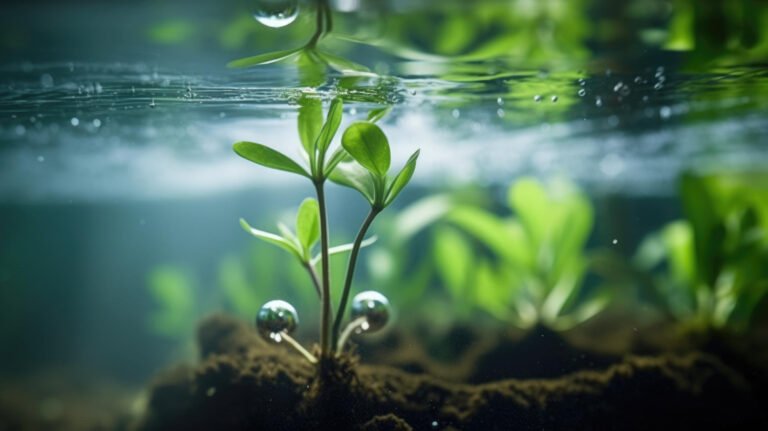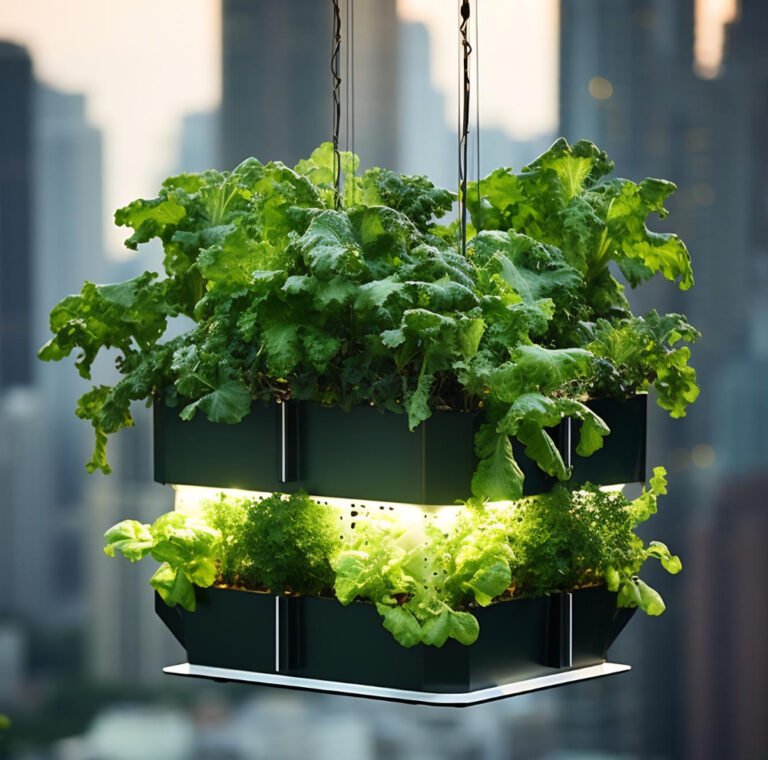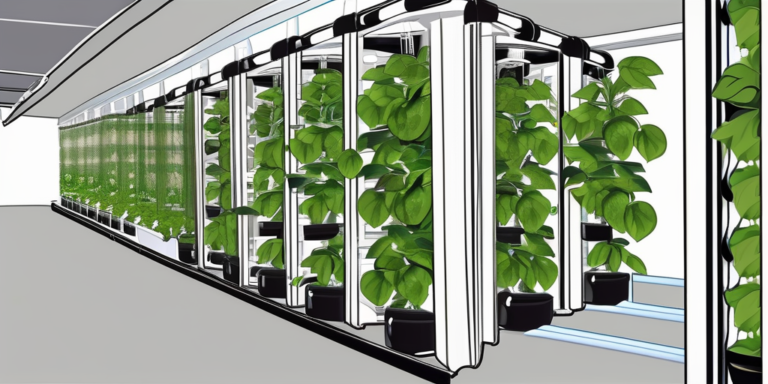Discover the joy of growing indoor plants in water and why it’s a trend you should dive into.
Have you ever thought about the wonders of plants grown in water? Imagine a luscious, tropical plant thriving in a beautiful glass vase, purely on water. No soil, no mess, just a clean, clear, and aesthetically pleasing spectacle of nature in your own living room.
Growing plants in water, or hydroculture, is a viable and exciting way to cultivate a range of indoor plants. It’s easy, sustainable, and a great way to watch the miracle of growth up close.
In this article, we’ll take a deep dive into the world of plants grown in water, also known as hydroponics or hydroculture. We’ll cover everything from the science behind why plants can thrive in water to the practical steps involved in setting up your own indoor water garden.
By the end of this article, you’ll have the knowledge and confidence to try growing your favorite plants in water. Get ready to transform your living space into a stunning indoor oasis, filled with thriving, water-loving plants.
A Detailed Explanation of Hydroculture
The field of botany has always been fascinating, especially when it comes to the techniques used to cultivate plants. One such technique that has gained popularity in recent years is hydroculture. Hydroculture involves growing plants in a water-based environment, which not only helps the plants to survive, but also enables them to flourish in ways that traditional soil-based methods cannot match. In this section, we will delve deeper into the fascinating world of hydroculture and explore the benefits it offers to both plants and growers alike.
Why Can Plants Grow in Water?
Plants need three main elements to grow: water, sunlight, and carbon dioxide. Soil, traditionally seen as an essential component for plant growth, mainly serves as a reservoir for water and nutrients. But if you provide these elements in other ways, like through water soluble fertilizer and indirect light, many types of plants can grow quite happily in water.
In the process known as photosynthesis, plants absorb light and convert it into energy. This light can be natural, from the sun, or artificial, from indoor lights. If your plants are indoors, they will do best with indirect sunlight. This can be achieved by placing them near a window that receives plenty of bright but indirect light.
Best Plants for Hydroculture
Did you know that indoor plants can be grown in water? There are many different types of house plants that thrive when grown in water, such as spider plants, lucky bamboo, Chinese evergreen, and a variety of vining plants. Not only are these plants beautiful and add some greenery to your home, but they also have air-purifying properties that can improve the overall quality of your indoor environment. So why not give it a try and add some water-loving plants to your home? You might be surprised at how easy and rewarding it can be to care for them!
Spider plants are a good choice for beginners, as they’re hardy and adapt well to a variety of conditions. Lucky bamboo and Chinese evergreens bring an exotic flair to your space, while vining plants like the sweet potato vine or a creeping plant species provide visual interest with their trailing stems and leaves.
Setting Up Your Hydroculture System
The first step in setting up a hydroculture system involves selecting a suitable container. You could opt for glass jars or vases that are large enough to accommodate the plant’s roots but small enough to prevent the plant from tipping over. The roots of the plant are the only parts that should be submerged in the water, while the rest of the plant should remain above water.
Using tap water is perfectly acceptable for most plants. However, if your tap water is high in chlorine, you may want to let it sit out overnight before using it to allow the chlorine to evaporate.
Here’s everything else you need to know to get started with your hydroculture journey.
Selecting Suitable Plant Varieties
When practicing hydroculture, it’s important to note that not all plants are equally equipped for this method of growth. While some plants can adjust to living in water, others are naturally more suited to this lifestyle. Therefore, before attempting hydroculture, it’s essential to research which plants are best suited for this type of growth. Some popular hydroculture plants include pothos, peace lilies, and spider plants. Additionally, it’s important to maintain the appropriate water and nutrient levels for the plants to thrive. This can include regularly changing the water, monitoring pH levels, and adding appropriate fertilizers. By following these guidelines, you can successfully grow healthy and thriving hydroculture plants in your own home.
Tropical and Aquatic Plants
When it comes to hydroculture, there are a wide variety of plants to choose from, but tropical and aquatic plants have proven to be popular choices. Chinese evergreen plants, for instance, are a great option for indoor tropical plants as they are well-suited for humid environments and can easily adapt to a water-based lifestyle. Additionally, aquatic plants are specifically designed for hydroculture, making them an excellent choice for anyone looking to explore this type of gardening. Overall, there are numerous plants that can thrive in a hydroculture environment, but these two types are a great starting point for anyone looking to get started.
Propagation Plants
Some plants are especially suited to water growth when being propagated. The spider plant, the Chinese money plant, and the prayer plant are great examples. To propagate these plants, simply take a cutting just below a leaf node, place it in a glass jar with only the roots submerged in water, and watch as it grows into a new plant.
Indoor Water Garden Plants
Creating an indoor water garden is a fascinating project, and with the right plants, it can become a beautiful focal point in your home. Indoor plants that grow well in water include the prayer plant, the aluminum plant, and the peace lily. These plants all love high humidity, making them perfect candidates for an indoor water garden.
Best indoor water garden plants! Here are some great options to consider:
1. Lucky Bamboo

2. Spider Plant


4. Philodendron

5. English Ivy

6. Snake Plant

7. Pothos



10. Peace Lily

These plants are all great choices for indoor water gardens because they thrive in moist environments and can help purify the air. Just be sure to select plants that are appropriate for the size of your water garden and the amount of sunlight it receives. Happy gardening!
Providing Optimal Conditions
One crucial step in achieving optimal growth for your plants is to provide them with the best possible conditions. This includes ensuring they have adequate water supply and acquiring healthy plants in the first place. However, it’s equally important to continue to monitor and care for your plants as they grow. To do this, you may want to consider making adjustments to the lighting, temperature, and humidity levels in your growing environment. Additionally, regularly checking for pests and diseases can help prevent potential damage to your plants. By taking these steps, you can help ensure your plants thrive and reach their full potential.
Lighting
The importance of the right light conditions can’t be understated. Indoor plants that grow in water typically prefer bright, indirect light. Too much direct sunlight can cause algae growth in your water, which can damage the plant’s root system.
Fertilizing
The nutrients that plants typically get from the soil will need to be added to the water. Water-soluble or hydroponic fertilizer can provide the necessary nutrients. But be careful not to over-fertilize, as it can harm the plants.
Water Changing
Regularly changing the water in your hydroculture setup is essential. Fresh water provides oxygen to the roots, and changing the water every few weeks prevents the buildup of any harmful bacteria or algae.
Troubleshooting Common Problems
Like any form of gardening, growing plants in water can have its challenges. However, with a bit of knowledge, these issues can easily be overcome.
Algae Growth
Algae growth can be a common issue when growing plants in water. If you notice your water turning green or see green growth on your container or roots, this is likely algae. To combat this, make sure your plants are not receiving too much direct light and change the water regularly.
Root Rot
Root rot can occur if the water is not changed regularly or if the plant is over-fertilized. If you notice that the roots of your plant are turning brown or mushy, you may have root rot. To fix this, trim off the affected roots and change the water. Be sure to monitor closely to ensure the problem doesn’t persist.
Plant Aesthetics and Design
Beyond the joy of successfully growing plants in water, there’s also the aesthetic appeal to consider. Hydroculture allows you to showcase your plant collection in a unique and visually appealing way.
Choosing the Right Vase
Choosing the right vase or container for your plants is not only crucial for their health but also for the aesthetic appeal of your setup. Clear glass vases or jars allow you to view the root systems and the water level, which can be both helpful and beautiful. If your plant has a vibrant root system or if you’ve chosen an aquatic plant that fully submerges in water, a clear container can provide an eye-catching display.
Creating a Hydroponic Display
Creating a hydroponic display with multiple plants can transform your space into a living art piece. Consider using vases of different heights or shapes for visual interest. You can even choose plants with varying leaf shapes and colors, such as the bright lime green of a prayer plant or the variegated leaves of a spider plant.
Incorporating Water Plants in Home Decor
Water plants can seamlessly fit into your home decor. A vase filled with bright, healthy plants can serve as a centerpiece on a dining table or a focal point on a bookshelf. Smaller setups can even grace your desk, bringing a piece of nature into your workspace.
Fostering Plant Health
When it comes to growing plants in water, there are several important factors to consider beyond simply providing water and light. In order to ensure that your plants thrive and remain healthy, it’s important to pay close attention to factors like temperature, humidity, and the type of water you use. Additionally, you’ll need to carefully monitor the growth of your plants and make any necessary adjustments to their environment to ensure that they receive the nutrients and support they need to flourish. With patience and dedication, however, you can grow beautiful and healthy plants in water that will bring joy and beauty to your home or office space.
Nutrient Provision
While water and light are essential, plants also need a range of nutrients to grow and stay healthy. In soil, plants would naturally extract these from the earth. But in water, you will need to provide these nutrients manually, typically in the form of a hydroponic fertilizer.
Monitoring Plant Health
Keep an eye on your plants to ensure they are thriving. Yellowing leaves, poor growth, or drooping can be signs of an unhappy plant. In such cases, consider changing the water more frequently, moving the plant to a location with better light, or adjusting the amount of fertilizer you’re using.
Root Maintenance
Maintaining the health of the plant’s roots is key in hydroculture. Roots should be white or light-colored and firm to the touch. If you notice discoloration or mushiness, this could be a sign of root rot, and you should change the water and remove the affected roots.
Experimenting with Different Plants
One of the joys of hydroculture is experimenting with different plants and setups. From the creeping vines of a sweet potato plant to the tropical leaves of an aluminum plant, the possibilities are almost endless.
You might even want to try growing some plants not typically associated with hydroculture. Many plants can adapt to water growth, so don’t be afraid to experiment. Even if a plant doesn’t thrive in water, it’s usually easy to return it to soil if necessary.
Final Thoughts
By now, you’ve journeyed through the world of hydroculture, understanding the basic principles and steps required to cultivate a successful indoor water garden. Growing plants in water opens up a whole new dimension of indoor gardening that’s both exciting and rewarding.
From selecting the best indoor plants that thrive in water, understanding the key conditions for growth, to troubleshooting common issues, you now possess the tools to embark on your own hydroculture adventure. The magic of watching a plant grow and flourish in water is an experience like no other.
Remember, patience is the companion of wisdom. Each plant has its own rhythm and timeline for growth. Stay observant, keep experimenting, and in time, you’ll cultivate not just a healthy plant collection but also a deeper appreciation for the marvels of nature. With hydroculture, your living space can become a serene oasis brimming with life, tranquility, and aesthetic appeal.
Frequently Asked Questions
Q: Can any plant be grown in water?
A: While many plants can adapt to water growth, not all plants are suited for hydroculture. Some plants naturally thrive in water, while others might struggle. It’s best to research or experiment to see what works best for your chosen plant.
Q: How often should I change the water for my hydroculture plants?
A: It’s recommended to change the water every few weeks. This prevents the buildup of bacteria and keeps the plant’s roots oxygenated.
Q: Can I use tap water for hydroculture?
A: Yes, most tap water is perfectly fine for growing plants in water. However, if your tap water is high in chlorine, it’s best to let it sit out overnight to let the chlorine evaporate before using.
Q: Do I need to use a fertilizer for my water-grown plants?
A: Yes, plants grown in water still need nutrients typically provided by soil. A water-soluble or hydroponic fertilizer can provide these necessary nutrients. However, be careful not to over-fertilize as this can harm your plants.
Q: What do I do if the roots of my plant turn brown?
A: If the roots of your plant are turning brown or becoming mushy, your plant might be experiencing root rot. To fix this, remove the affected roots and change the water.







